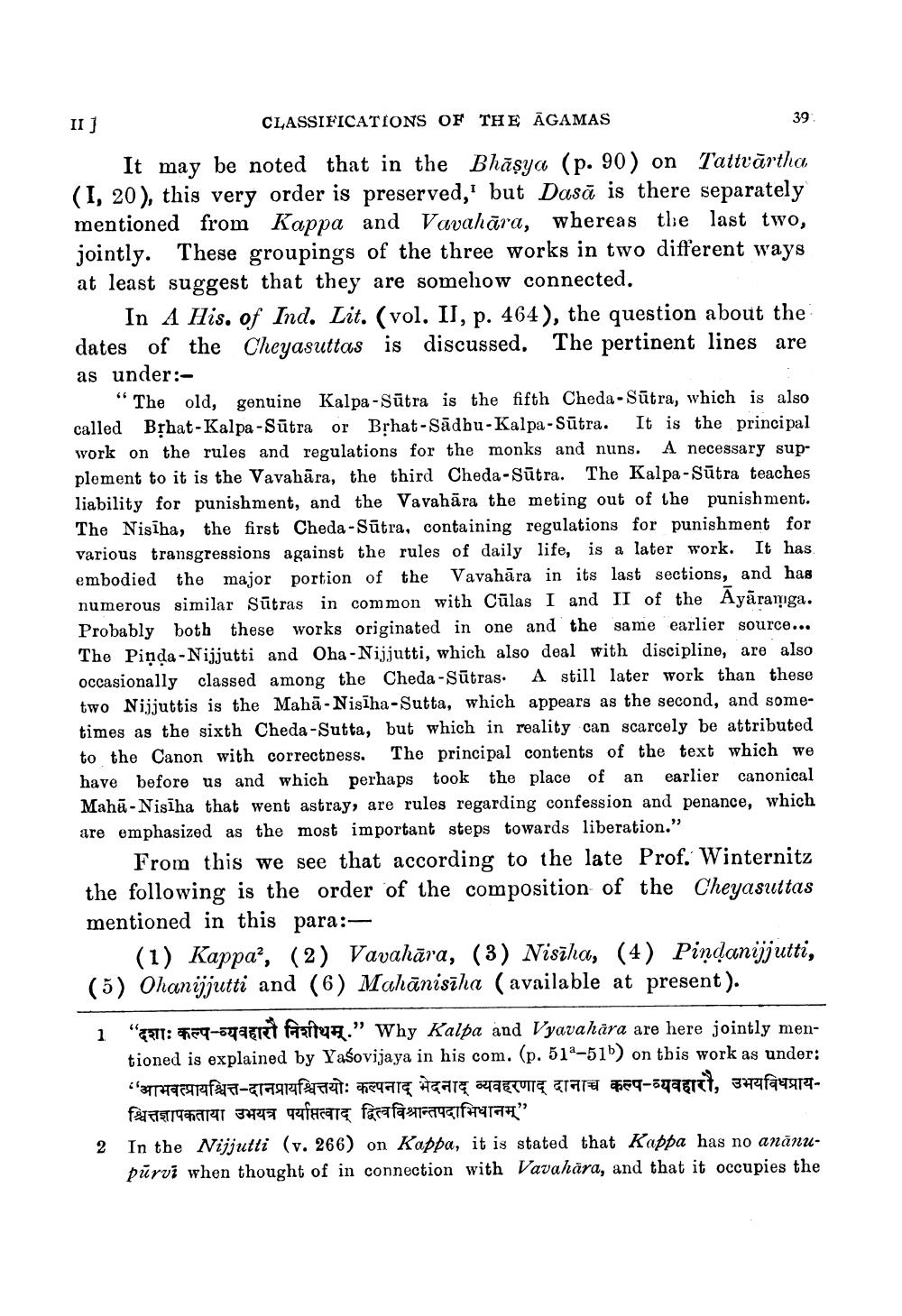________________
II ]
CLASSIFICATIONS OF THE AGAMAS It may be noted that in the Bhāşya (p. 90) on Tattvārtha, (I, 20), this very order is preserved,' but Dasă is there separately mentioned from Kappa and Vavahāra, whereas the last two,
jointly. These groupings of the three works in two different ways at least suggest that they are somehow connected.
In A His. of Ind. Lit. (vol. II, p. 464), the question about the dates of the Cheyasuttas is discussed. The pertinent lines are as under:
"The old, genuine Kalpa-Sūtra is the fifth Cheda-Sūtra, which is also called BỊhat-Kalpa-Sūtra or Bșhat-Sādbu-Kalpa-Sūtra. It is the principal work on the rules and regulations for the monks and nuns. A necessary supplement to it is the Vavahāra, the third Cheda-Sūtra. The Kalpa-Sūtra teaches liability for punishment, and the Vavahāra the meting out of the punishment. The Nisība, the first Cheda-Sūtra, containing regulations for punishment for various transgressions against the rules of daily life, is a later work. It has embodied the major portion of the Vavahāra in its last sections, and has numerous similar Sūtras in common with Cūlas I and II of the Ayāramıga. Probably both these works originated in one and the same earlier source... The Pinda-Nijjutti and Oha - Nijjutti, which also deal with discipline, are also occasionally classed among the Cheda-Sūtras. A still later work than these two Nijjuttis is the Mahā - Nisīha-Sutta, which appears as the second, and sometimes as the sixth Cheda-Sutta, but which in reality can scarcely be attributed to the Canon with correctness. The principal contents of the text which we have before us and which perhaps took the place of an earlier canonical Mahā-Nisīha that went astray, are rules regarding confession and penance, which are emphasized as the most important steps towards liberation."
From this we see that according to the late Prof. Winternitz the following is the order of the composition of the Cheyasuttas mentioned in this para:
(1) Kappa?, (2) Vavahāra, (3) Nisīha, (4) Piņdanijjutti, (5) Ohanijjutti and (6) Mahānisīha (available at present).
1 "ENT: +49-604rt fararten.” Why Kalpa and Vyavahāra are here jointly men
tioned is explained by Yaśovijaya in his com. (p. 514-51b) on this work as under: "आभवत्प्रायश्चित्त-दानप्रायश्चित्तयोः कल्पनाद् भेदनाद् व्यवहरणाद् दानाच्च कल्प- 1. 3 fayre.
श्चित्तज्ञापकताया उभयत्र पर्याप्तत्वाद् द्वित्वविश्रान्तपदाभिधानम्" । 2 In the Nijjutti (v. 266) on Kappa, it is stated that Kappa has no anānu
pūrvi when thought of in connection with Vavahāra, and that it occupies the




